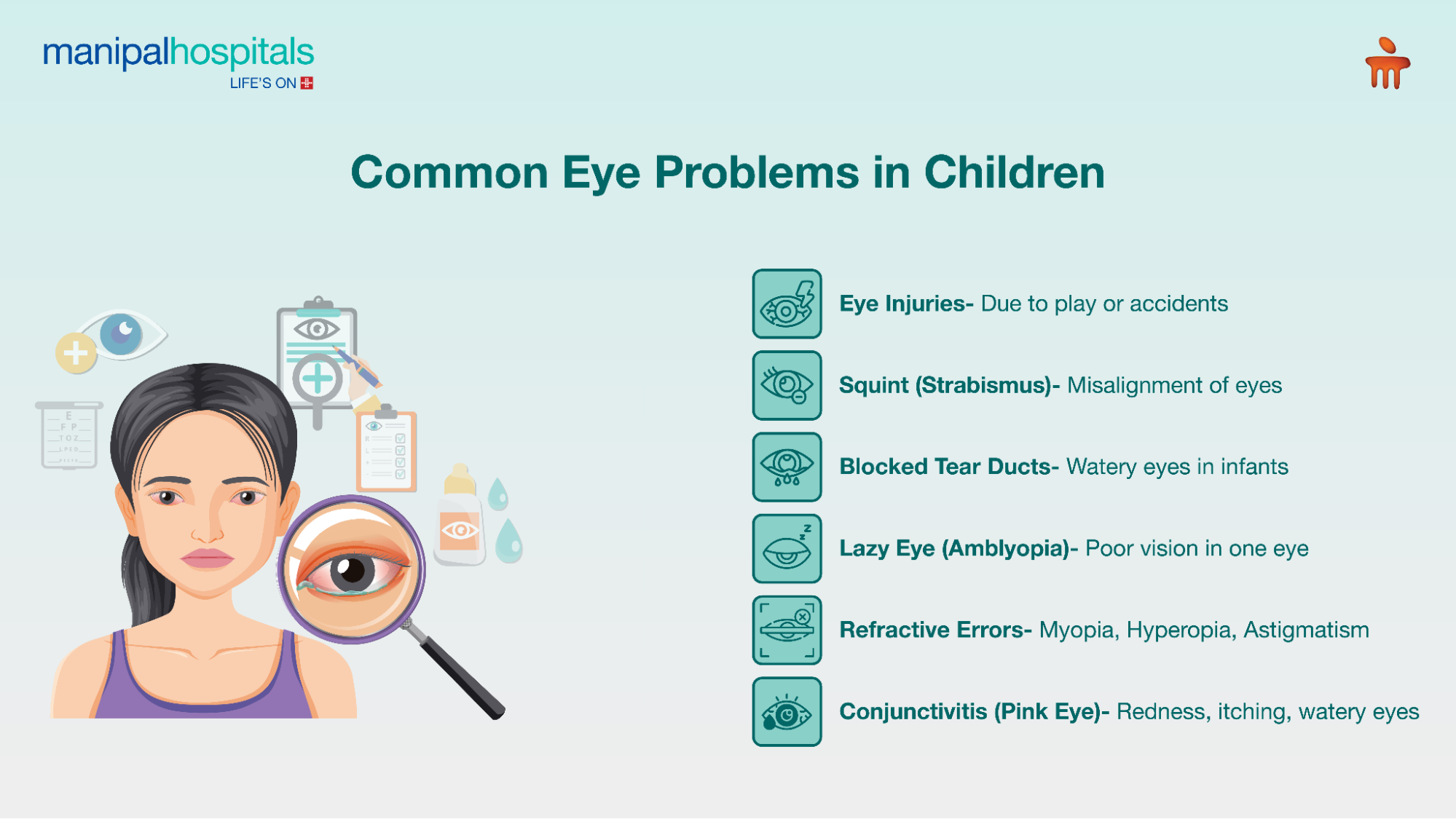
As parents, we do everything possible to keep our children safe and healthy. While we often focus on their diet, growth, and learning milestones, one area that sometimes goes unnoticed is their eye health. Good vision is crucial for a child’s overall development, school performance, and confidence. However, many eye problems in children can go unnoticed because kids may not always be able to explain what they see or feel.
This guide will help you understand the common eye problems in children, their symptoms, and essential child eye care tips to ensure your little one’s vision stays sharp and healthy.
Synopsis
Why Eye Health Matters in Childhood
Children learn about 80% of what they know through their eyes. From reading books to watching the world around them, vision plays a major role in learning and social interactions. If left untreated, children's eye problems can lead to long-term issues such as poor academic performance, social difficulties, or even permanent vision loss. Early detection and timely treatment are therefore vital.
Common Eye Problems in Children
Here are some of the most frequently seen eye problems in children:

1. Refractive Errors
Conditions like short-sightedness (myopia), long-sightedness (hyperopia), and astigmatism are among the most common. Children with refractive errors may squint, sit too close to the television, or complain of headaches.
2. Lazy Eye (Amblyopia)
This occurs when one eye does not develop proper vision, often due to an imbalance between the two eyes. If not treated early, it can cause permanent vision issues.
3. Squint (Strabismus)
In this condition, both eyes do not align properly, leading to crossed or outward eyes. It may cause double vision or poor depth perception.
4. Conjunctivitis (Pink Eye)
Often caused by infection or allergies, conjunctivitis leads to redness, watering, and itching. It spreads easily among children.
5. Blocked Tear Ducts
Some infants are born with tear ducts that don’t open properly, causing constant watery eyes or infections.
6. Eye Injuries
Children are naturally curious and active, making them prone to accidental scratches, foreign objects in the eye, or trauma while playing.
Signs of Eye Problems in Children
Since children may not always voice their discomfort, parents should watch for these signs of eye problems in children:
-
Frequent eye rubbing or blinking.
-
Squinting or tilting the head to see clearly.
-
Sitting too close to books, screens, or TV.
-
Complaints of blurred or double vision.
-
Red, watery, or itchy eyes.
-
Sensitivity to light.
-
Poor hand-eye coordination.
If you notice any of these, it’s best to consult a pediatric eye specialist without delay.
Child Eye Care Tips Every Parent Should Know
Good eye health begins at home. Here are some simple yet effective child eye care tips:
-
Encourage outdoor play – At least 1–2 hours of outdoor activity daily reduces the risk of myopia.
-
Limit screen time—Follow the “20-20-20 rule”: every 20 minutes of screen use, encourage your child to look at something 20 feet away for 20 seconds.
-
Provide a balanced diet – Foods rich in vitamin A, omega-3 fatty acids, and leafy greens promote healthy vision.
-
Ensure proper lighting – Reading or studying in dim light strains the eyes.
-
Use protective eyewear – For sports or outdoor activities, safety glasses can prevent injuries.
-
Routine eye check-ups – Regular eye examinations, even if your child shows no symptoms, help in the early detection of hidden problems.
Role of Schools and Parents
Teachers often notice the first signs of a child's eye problems, such as difficulty seeing the board or lack of concentration. Parents should take such observations seriously and arrange an eye check-up immediately. A supportive environment at home and school ensures that children don’t feel self-conscious about wearing glasses or undergoing treatment.
When to Visit a Paediatric Eye Specialist
You should seek medical advice if your child:
-
Has persistent eye redness, discharge, or pain.
-
Complaints of headaches or blurred vision.
-
Shows sudden changes in eye alignment.
-
Struggles with reading or focusing.
-
Has a family history of eye diseases.
Specialised care ensures your child gets the right treatment at the right time, preventing long-term complications.
Expert Paediatric Eye Care at Manipal Hospitals
If you are worried about your child’s vision, consulting a trusted hospital is the best step forward. At Manipal Hospitals, experienced pediatric specialists offer comprehensive solutions for children's eye problems. from routine eye tests to advanced treatments for squint, lazy eye, or refractive errors.
Conclusion
Parents in Pune can visit Manipal Hospital Baner and Manipal Hospital Kharadi for expert care. Both hospitals are equipped with modern diagnostic tools and a child-friendly environment to make eye care comfortable and stress-free for your little one.
Good vision is not just about clear eyesight. it’s about ensuring that children can learn, play, and grow without barriers. By understanding the common eye problems in children, keeping an eye on child eye problem symptoms, and following simple child eye care tips, parents can safeguard their child’s future. Early detection and timely treatment can make all the difference.
FAQ's
Most experts recommend an eye check at birth, at six months, at 3–5 years, and then regularly during school years.
While it may not cause permanent damage, excessive screen time can lead to eye strain, dryness, and increased risk of myopia.
No. In many cases, early treatment with glasses, eye exercises, or minor surgery can correct squint effectively.
Carrots, spinach, eggs, fish, and citrus fruits are all beneficial for eye health.
Lazy eye must be treated early, usually before the age of 7, for the best outcomes. Without treatment, it does not improve on its own.






















 5 Min Read
5 Min Read








